In this artist’s illustration, the black hole at the center of our Milky Way Galaxy has an intense magnetic field around it. We know it’s intense, because a pulsar was discovered inside the field. Like a buoy bouncing on the waves, the pulsar’s pulse twisted in this field. The amount of twist helped gauge the strength of the field and hence the power of the black hole’s environment.
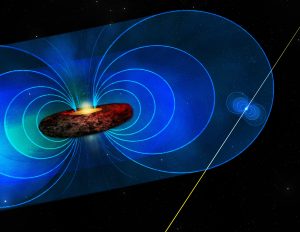
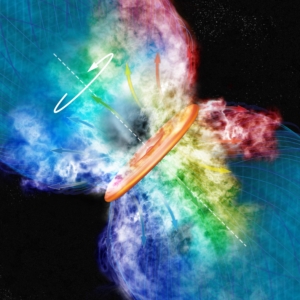
A Star Turns On
In this artist’s interpretation, the spinning disk of a newly-forming star swirls the gas around it in a counter-clockwise motion. The gas is coded by color, with reds showing speed away from us and blue showing speeds toward us. This new star resides in the giant star-forming cloud in the Orion constellation.
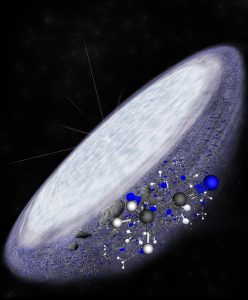
Hints that Prebiotic Chemistry Is Universal
Artist impression of the protoplanetary disk surrounding the young star MWC 480. ALMA has detected the complex organic molecule methyl cyanide in the outer reaches of the disk in the region where comets are believed to form. This is another indication that complex organic chemistry, and potentially the conditions necessary for life, is universal.
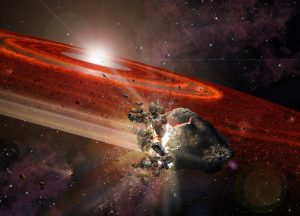
Swarms of Pluto-Size Objects Kick-Up Dust around Adolescent Sun-Like Star
Artist impression of the debris disk around HD 107146. This adolescent star system shows signs that in its outer reaches, swarms of Pluto-size objects are jostling nearby smaller objects, causing them to collide and “kick up” considerable dust.
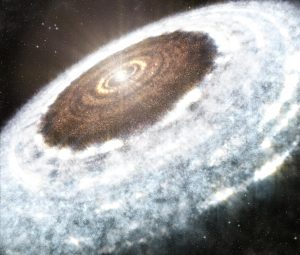
Stellar Outburst Brings Water Snowline into View
Artist impression of the water snowline around the young star V883 Orionis, as detected with ALMA.
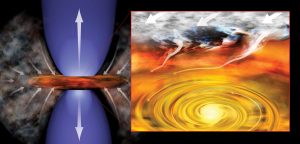
Outflows from a Young Solar System
Astronomers have found the youngest still-forming solar system yet seen, an infant star surrounded by a swirling disk of dust and gas more than 450 light-years from Earth in the constellation Taurus. In this artist’s conception of infant solar system, the young star pulls material from surroundings into rotating disk (right) and generates outflowing jets of material (left).





